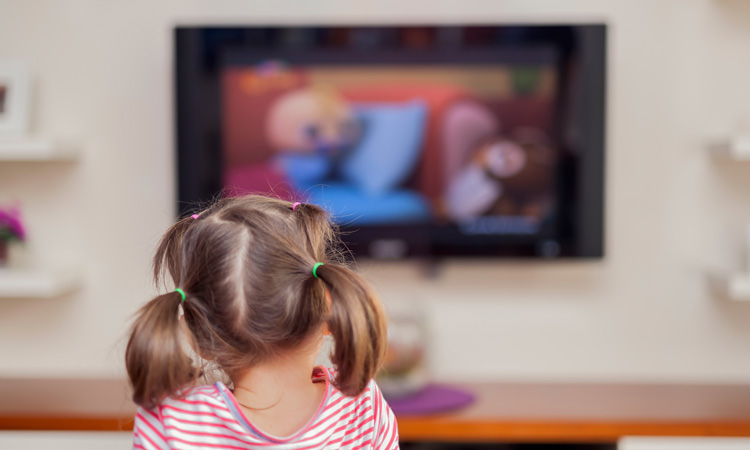US children now see fewer unhealthy food and drink ads, but exposure remains high
- Like
- Digg
- Del
- Tumblr
- VKontakte
- Buffer
- Love This
- Odnoklassniki
- Meneame
- Blogger
- Amazon
- Yahoo Mail
- Gmail
- AOL
- Newsvine
- HackerNews
- Evernote
- MySpace
- Mail.ru
- Viadeo
- Line
- Comments
- Yummly
- SMS
- Viber
- Telegram
- Subscribe
- Skype
- Facebook Messenger
- Kakao
- LiveJournal
- Yammer
- Edgar
- Fintel
- Mix
- Instapaper
- Copy Link
Posted: 27 August 2024 | Ben Cornwell | No comments yet
Despite a significant drop in food and drink ads during kids’ TV shows, a study reveals that US children under 12 still see over 1,000 food-related ads annually, mostly for unhealthy products.


For the University of Illinois Chicago study, published in JAMA Network Open, researchers compared trends in children watching food and beverage television commercials in the US between 2013 and 2022. The study authors found that a dramatic decline in food and drink advertisements during children’s shows did not fully eliminate children’s exposure to ads for products high in saturated fat, trans fat, total sugars, and sodium.
“Kids are still seeing about a thousand ads per year on other programmes, and the majority of ads that kids see are still for unhealthy products,” said Lisa Powell, distinguished professor and director of health policy and administration in the UIC School of Public Health.
Powell added, “This is important as the World Health Organization (WHO) has recognised that reducing children’s exposure to unhealthy food and beverage advertisements is a key strategy for improving both children’s diets and health.”
The World Health Organization (WHO) has advocated for government-mandated rules to limit harmful food advertising and marketing to children; but, few nations have enacted these types of laws.
However, in the US, in 2006 the voluntary industry self-regulatory Children’s Food and Beverage Advertising Initiative (CFBAI) was introduced, with a group of food, beverage, and restaurant companies pledging to only advertise healthy products on children’s television programming. These programmes were defined by the CFBAI as shows where at least 35 percent of viewers are under the age of 12.
Further revisions in 2014 and 2020 established nutritional criteria for what qualifies as unhealthy and therefore should not be advertised to young audiences.
Key findings
The study, which analysed television ratings data from The Nielsen Company, found that following changes in companies’ self-regulation, the number of general food and beverage commercials seen during children’s programmes fell by over 95 percent. However, they found that 60 percent of the remaining food and beverage ads were still for unhealthy products.
While children under the age of 12 still saw more than 1,000 food-related advertisements per year, on average, as much as 90% of this exposure came from watching shows with lower child-audience shares.
Therefore, because of this shift, the UIC authors suggest that it would be more effective to apply regulations against advertising unhealthy food and beverages during hours when children are likely to watch television shows, rather than focusing restrictions specifically on children’s shows.
The researchers also found a persistent racial difference in exposure to food-related advertisements. While the number of these ads seen by both Black and White children declined from 2013 to 2022, Black children saw significantly more advertisements than their White counterparts, due in part to more time spent watching television.
Exploring children’s exposure to advertising on other media
With children’s time watching television declining generally, the study suggests the need for research on their exposure to advertising on other media. This is something Powell and her team are exploring with the group in the early stages of launching a new project to measure the ads children encounter through social media platforms and digital entertainment.
Powell said, “We know that the media kids consume is changing. They’re spending more time on their mobile devices, whether it be a tablet or a phone, and they’re seeing a lot of ads.”
“We really need to understand where else the food companies target kids and what they’re seeing.”
In addition to Powell, UIC co-authors include Julien Leider, Rebecca Schermbeck, and Aline Vandenbroeck, along with University of Connecticut co-author Jennifer Harris. The study was supported by grants from Bloomberg Philanthropies and the Robert Wood Johnson Foundation.
Related topics
Health & Nutrition, Obesity, Regulation & Legislation, Research & development, The consumer
Related organisations
Bloomberg Philanthropies, CFBAI, Robert Wood Johnson Foundation, The Nielsen Company, The World Health Organization (WHO), University of Illinois Chicago
Related regions
Related people
Aline Vandenbroeck, Jennifer Harris, Julien Leider, Lisa Powell, Rebecca Schermbeck








